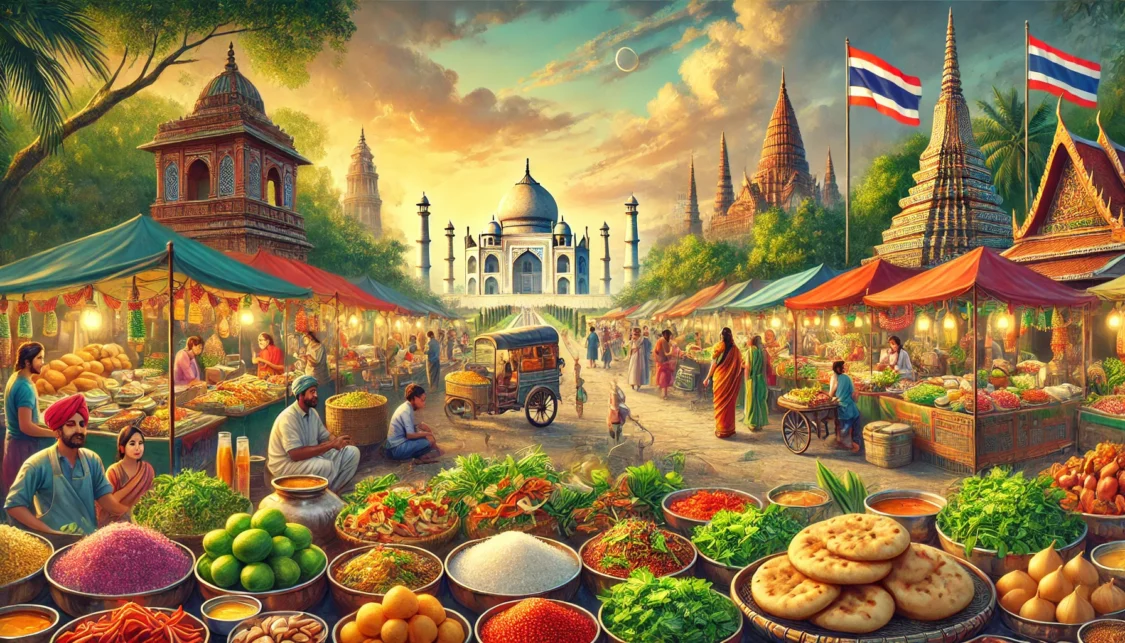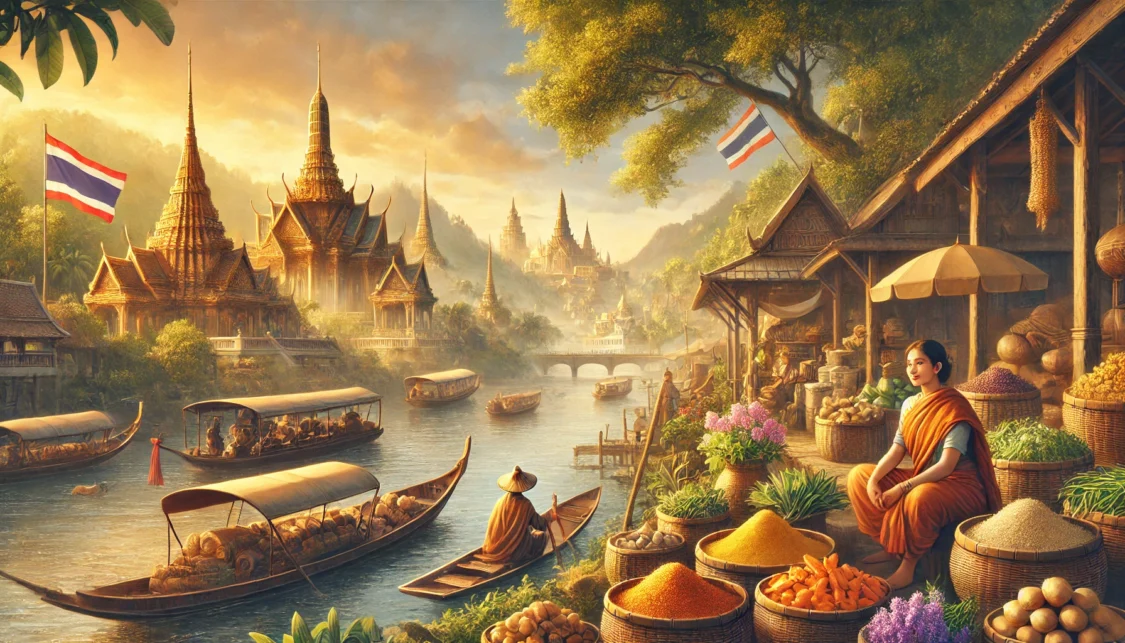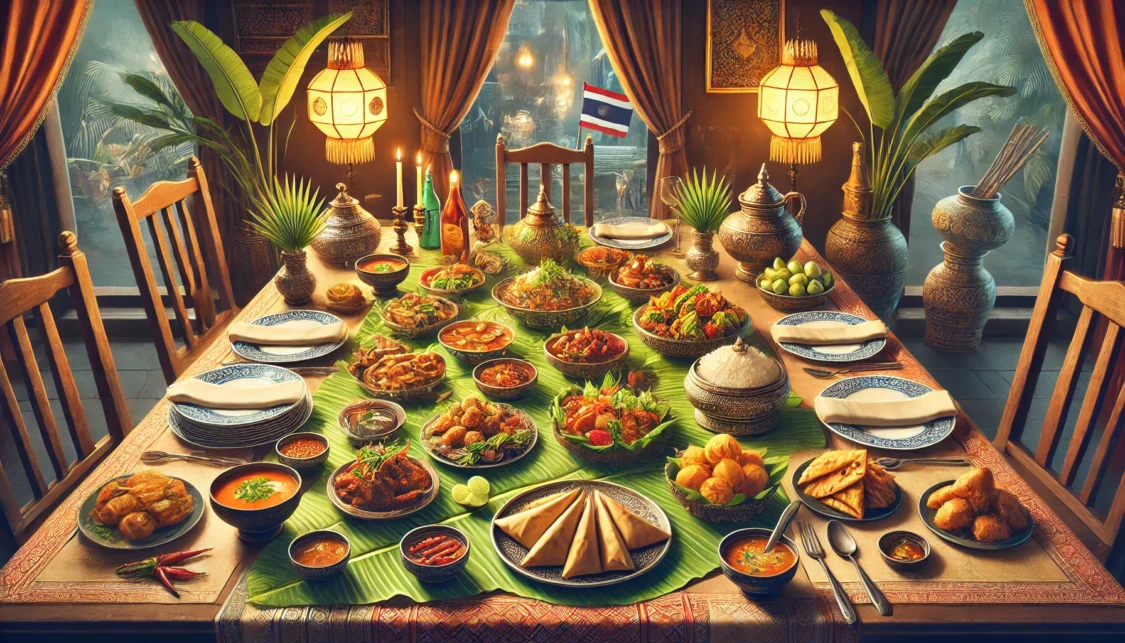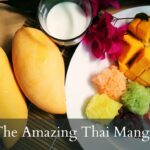History of Indian Food in Thailand

Bangkok is well-known for having some of the best Indian restaurants in the world. However, great Indian restaurants become harder to find the further upcountry you go. For many years, Sakon Nakhon didn’t have any Indian restaurant at all — but thankfully now is home to one of the best Indian restaurants in Northeast Thailand: Namastey Indian Food.
Our recent visit to Namastey for a delicious Chicken Tikka Masala lunch, got us thinking that it would be a good idea to do a deep dive into the history of Indian food in Thailand. So, let’s jump in and learn more.
The Indian Influence on Thai Cuisine
The connection between India and Thailand can be traced back to the early days of the Silk Road and maritime trade routes. Indian traders, particularly from the southern state of Tamil Nadu, frequently traveled across Southeast Asia, bringing with them not just goods like textiles and precious stones but also the essential elements of Indian cuisine — spices, dried herbs, and cooking techniques. These traders settled in parts of Thailand, intermingling with the local communities, and over time, their culinary traditions became embedded in Thai food culture.
One of the biggest contributions of Indian cuisine to Thailand was the introduction of spices. Before Indian influence, Thai food primarily relied on locally available herbs like lemongrass and kaffir lime leaves for flavoring. However, Indian traders introduced ingredients such as turmeric, cumin, coriander, cardamom, and cloves, which dramatically expanded the flavor profile of Thai dishes. These spices added depth and warmth to Thai cooking, resulting in the complex and aromatic dishes we recognize today.
The Evolution of Thai Curries: A Shared Heritage
Perhaps the most well-known example of Indian influence in Thai cuisine is its curries. While Thai curries have developed a unique identity over time, their origins can be traced back to Indian-style preparations. The very word “curry” comes from the Tamil word kari, meaning a spiced sauce.
Take Kaeng Kari (แกงกะหรี่), or Thai yellow curry, for example. Unlike the fiery red and green curries of Thailand, this dish closely resembles an Indian-style curry, using turmeric as a base for its golden hue and blending in cumin and coriander for added earthiness.
Another notable example is Massaman Curry (แกงมัสมั่น), a dish that stands out in Thai cuisine due to its use of warming Indian and Persian spices like cinnamon, star anise, and cardamom. Massaman curry is thought to have been introduced by Indian and Muslim traders, particularly from Persia and the Mughal Empire, who brought slow-cooked, spice-infused stews to Thailand.
Unlike traditional Indian curries, which are often thickened with tomatoes and onions, Thai curries evolved to incorporate local ingredients like coconut milk, galangal, and fish sauce, giving them a distinctively Thai character. This blending of Indian spices with Southeast Asian ingredients is a perfect example of how food cultures adapt and evolve over time, resulting in something new yet familiar.

Indian Inspiration in Thai Desserts
Beyond savory dishes, Indian influence can also be seen in Thai desserts. Some of the most famous Thai sweets have roots in Indian confectionery. Foi Thong (ฝอยทอง), for instance, which means “golden threads,” is made from egg yolks that are drizzled into boiling sugar syrup, creating delicate, golden strands. This dish is almost identical to Indian Seviyan (vermicelli-based desserts) or Rajasthani Ghevar, which use similar techniques of deep-frying or syrup-dipping.
Other traditional Thai desserts like Thong Yip (ทองหยิบ) (pinched gold) and Thong Yod (ทองหยอด) (golden drops) are also thought to have been inspired by Indian sweets that use sugar, egg yolks, and flour to create rich, syrupy treats. Interestingly, these desserts were introduced to Thai royal cuisine in the 17th century by Maria Guyomar de Pinha, a woman of mixed Japanese, Portuguese, and Indian descent who served in the court of King Narai. She adapted Indian sweets into Thai-style confections, adding a layer of European influence as well.
Cultural and Religious Ties Beyond the Kitchen
The influence of India on Thailand extends far beyond food — it can also be seen in Thai religious and cultural traditions. Many Thai words originate from Sanskrit, the ancient language of India, and the Thai script itself has roots in the Indian Pallava script. Additionally, Hindu epics like the Ramayana have been retold in Thai culture through dance, art, and literature, where they are known as the Ramakien (รามเกียรติ์).
Religious influences also played a role in shaping Thailand’s food practices. Hinduism and Buddhism, both of which originated in India, introduced certain dietary customs to Thailand. Many Thai vegetarian dishes, particularly those prepared during Tesagan Gin Jay (เทศกาลกินเจ) (the Thai vegetarian festival), reflect Buddhist and Indian Jain influences, emphasizing plant-based diets free from strong-smelling vegetables like garlic and onions.

Indian Cuisine in Modern Thailand
Today, the presence of Indian food in Thailand is stronger than ever. Bangkok, in particular, is home to a thriving Indian community, with entire neighborhoods like Phahurat (พาหุรัด) (Bangkok’s Little India) dedicated to Indian culture. Here, visitors can find authentic North and South Indian restaurants serving Butter Chicken, Biryani, Dosas, and Idlis, as well as street vendors selling freshly made samosas and chaats. Indian-style Naan and Roti (โรตี) have also been widely embraced in Thai cuisine, often served with Thai-style curries or even used as street food snacks with sweet condensed milk.
At the same time, Thai food has made its way into Indian communities, with Thai restaurants popping up in cities across India, offering a fascinating reverse exchange of flavors. Dishes like Thai basil chicken (ผัดกะเพราไก่), papaya salad (ส้มตำ), and tom yum soup (ต้มยำ) have gained a following in India, proving that the influence flows in both directions.
- Affirmations in Buddhism & Thailand - June 7, 2025
- Speak Thai Naturally Without the Gymnastics - April 20, 2025
- The Best Learn Thai Podcast and YouTube Channel - April 10, 2025




